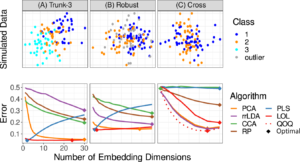Machine Learning Algorithms: An In-Depth Exploration
Machine learning (ML) has become a transformative force across many industries, driving advancements in fields ranging from healthcare to finance, and from entertainment to transportation. At the heart of this technology lie machine learning algorithms, which are sophisticated mathematical models designed to analyze data, identify patterns, and make predictions or decisions. This article provides a comprehensive overview of machine learning algorithms, including their types, applications, and
What Are Machine Learning Algorithms?
Machine learning algorithms are computational methods that allow computers to learn from data without being explicitly programmed for specific tasks. These algorithms adapt and improve their performance over time based on experience and data input. They can be categorized into three main types: supervised learning, unsupervised learning, and reinforcement learning.
Supervised Learning Algorithms
Supervised learning is one of the most common and straightforward types of machine learning. In supervised learning, algorithms are trained on a labeled dataset, which means that each training example is paired with an output label. The goal is for the algorithm to learn the relationship between the input features and the output labels so that it can make accurate predictions on new, unseen data.
1. Regression Algorithms
Regression algorithms predict continuous output values. Some of the most widely used regression techniques include:
Linear Regression: This algorithm models the relationship between the dependent variable and one or more independent variables using a linear equation. It’s often used in cases where the relationship between variables is approximately linear. The linear regression model aims to find the best-fitting line through the data points by minimizing the mean squared error between the predicted and actual values.
– **Polynomial Regression**: An extension of linear regression, polynomial regression models the relationship between the independent and dependent variables as an nth-degree polynomial. This approach is useful for capturing more complex relationships in the data that a simple linear model might miss.
2. Classification Algorithms
Classification algorithms are used when the output variable is categorical. These algorithms classify data into predefined categories or classes. Key classification techniques include:
Logistic Regression: Despite its name, logistic regression is used for binary classification problems, where the outcome is one of two classes. It predicts the probability that a given input belongs to a particular class using the logistic function, which maps predicted values to probabilities between 0 and 1.
Support Vector Machines (SVM): SVMs work by finding the optimal hyperplane that separates data points of different classes in the feature space. SVMs are effective in high-dimensional spaces and are robust to overfitting, especially in cases where the number of dimensions exceeds the number of samples.
Decision Trees: Decision trees use a tree-like model of decisions and their possible consequences. Each node in the tree represents a feature or attribute, each branch represents a decision rule, and each leaf node represents an outcome. Decision trees are intuitive and easy to interpret but can be prone to overfitting.
Random Forests: A random forest is an ensemble learning method that combines multiple decision trees to improve predictive performance. Each tree is trained on a random subset of the data and features, and the final prediction is based on aggregating the results of all trees. This method reduces the risk of overfitting and improves accuracy.
Unsupervised Learning Algorithms
Unsupervised learning algorithms work with data that has no labels or predefined outcomes. The goal is to identify patterns, structures, or relationships within the data without prior knowledge of what the outcomes should be.
1. Clustering Algorithms
Clustering algorithms group data points into clusters based on their similarity. Popular clustering methods include:
K-Means Clustering: K-means is a partitioning algorithm that divides data into K distinct clusters. It works by iteratively assigning data points to the nearest cluster centroid and then updating the centroids based on the mean of the assigned data points. The algorithm converges when the cluster assignments no longer change.
Hierarchical Clustering: Hierarchical clustering builds a hierarchy of clusters either by iteratively merging smaller clusters (agglomerative) or splitting larger clusters (divisive). The result is often represented as a dendrogram, a tree-like diagram that shows the arrangement of clusters and their relationships.
2:Dimensionality Reduction Algorithms

Dimensionality reduction techniques aim to reduce the number of features or dimensions in the data while retaining as much important information as possible. Common dimensionality reduction methods include:
Principal Component Analysis (PCA): PCA transforms data into a new coordinate system where the greatest variances are along the first few principal components. It’s often used to reduce the complexity of data while preserving the variance, making it easier to visualize and analyze.
t-Distributed Stochastic Neighbor Embedding (t-SNE): t-SNE is a technique for visualizing high-dimensional data by mapping it to a lower-dimensional space. It’s particularly useful for exploring and understanding the structure of complex datasets by preserving local similarities.
Reinforcement Learning Algorithms
Reinforcement learning (RL) involves training agents to make decisions by rewarding desirable actions and penalizing undesirable ones. The agent learns to take actions that maximize cumulative rewards over time.
1. Q-Learning
Q-Learning is a model-free RL algorithm that learns the value of taking a specific action in a given state. It maintains a Q-table, where each entry represents the expected reward for a particular action-state pair. The algorithm updates the Q-values based on observed rewards and estimates of future rewards, eventually converging to the optimal policy.
2. Deep Q-Networks (DQN)
Deep Q-Networks extend Q-Learning by using neural networks to approximate Q-values instead of a Q-table. This approach allows RL to be applied to environments with large state and action spaces, where traditional Q-Learning would be impractical.
3. Policy Gradient Methods
Policy gradient methods directly optimize the policy that maps states to actions. Rather than estimating value functions, these methods adjust the policy parameters to maximize the expected reward. Policy gradients are particularly effective in environments with continuous action spaces.
Applications of Machine Learning Algorithms
Machine learning algorithms have a wide range of applications, each leveraging different aspects of these algorithms to address specific challenges:
Healthcare: ML algorithms assist in diagnosing diseases, predicting patient outcomes, and personalizing treatments. For example, ML models can analyze medical images to identify tumors or predict patient risks based on historical data.
Finance: In finance, ML algorithms are used for fraud detection, algorithmic trading, and credit scoring. They analyze transaction patterns to detect anomalies, forecast market trends, and assess creditworthiness.
Marketing: ML algorithms enable personalized marketing by analyzing customer data to segment audiences, recommend products, and optimize advertising campaigns based on user preferences and behaviors.
Transportation: Autonomous vehicles, route optimization, and traffic management are areas where ML is making a significant impact. Algorithms help self-driving cars navigate complex environments, optimize delivery routes, and manage traffic flow.
-Manufacturing: ML algorithms are used for predictive maintenance, quality control, and supply chain optimization. They predict equipment failures before they occur, ensure product quality, and streamline supply chain operations.

Despite their powerful capabilities, machine learning algorithms face several challenges:
Data Quality and Quantity: Effective machine learning requires large amounts of high-quality data. Issues like missing values, biases, and noisy data can impact model performance. Ensuring data accuracy and adequacy is crucial for successful ML applications.
Interpretability: Many ML models, especially complex ones like deep neural networks, are often considered “black boxes” because their decision-making processes are not easily interpretable. Improving the transparency and interpretability of these models is an ongoing area of research.
Ethical Considerations: The use of ML algorithms raises ethical issues related to privacy, fairness, and accountability. Ensuring that algorithms do not perpetuate biases or invade privacy is essential for responsible AI deployment.
Looking ahead, advancements in ML algorithms are expected to focus on enhancing model efficiency, robustness, and exploitability. Emerging areas such as federated learning, which allows models to be trained across decentralized data sources without sharing raw data, and explainable AI, which aims to make complex models more interpretable, will likely play a significant role in shaping the future of machine learning.
Conclusion
Machine learning algorithms are the backbone of modern AI, enabling systems to learn from data, make informed predictions, and drive innovations across various domains. By understanding the different types of algorithms—supervised, unsupervised, and reinforcement learning—along with their applications and challenges, we can better appreciate their transformative potential. As research and development continue to advance, machine learning will undoubtedly play an increasingly pivotal role in solving complex problems and shaping the future of technology.
